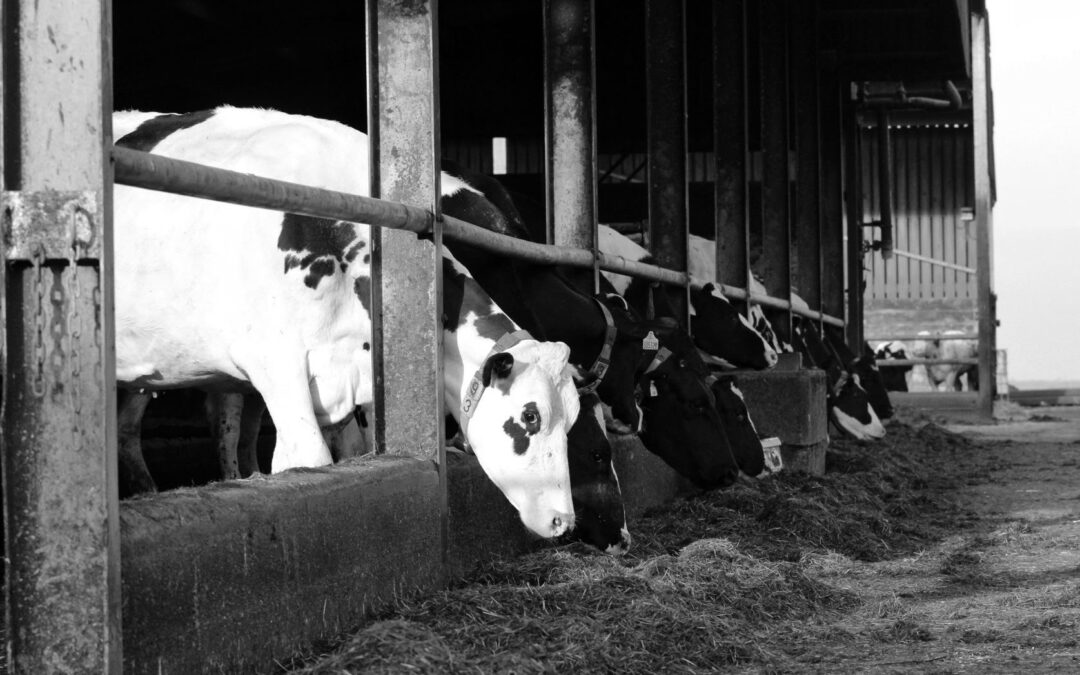Housing your livestock this winter
This year we have seen an extended grazing season due to the mild autumn temperatures. However, now is the time when many farmers are looking ahead to housing, and we’ve come up with our top 3 tips to making the housing period a success.
So let’s take a look…
Housing Maintenance
Have you checked if any repairs need doing prior to livestock coming in? Is the shed in good repair? Are the water troughs working properly? Is clean and fresh water filling the troughs? Cows will drink up to 120l of water per day, so it is important to make sure the water they consume is clean to avoid health or production losses. And do your cattle have enough trough space? Cows need at least 10cm of water trough space per cow at all stages of their production cycle.
Airflow has a major affect on the health and productivity of cattle. When cows are housed, cows are held in a more concentrated area, their body heat is also concentrated in a smaller area. Cattle will sweat to get rid of excess energy from their diets. With this excess heat, it is important cows have a good circulation of fresh air and to prevent respiratory disease. Speak to your Feed Specialist for more information or visit Massey Harpers for their full range of ventilation solutions.
When it comes to housing, the more you can encourage cows to lie down the more productive they will be. When cows are lying down, they are producing milk and they are not exuding energy on actions that are hindering production. Cows spend up to 12 hours a day lying down. The more you can improve the environment the cow is in, in terms of cow comfort the more productive she will be. As a rule, a lying area of 10m2 is recommended.
The great news is that you can influence the above factors and improve your outputs.
Animal Health
Following on from the importance of cow lying times, an appropriate bedding is required to maintain cow health. Massey Harpers has a range of bedding solutions that will suit your management system. Whether you have mattresses or sand, it is vital to provide a comfortable, clean area for your livestock, this will reduce the risk of disease and improve production.
Clipping the backs of your cattle will help them shed excess heat from their bodies, providing them with a more comfortable coat.
At the time of housing, it is always a good idea to keep an eye on cattle mobility score and body condition score to assess that their condition has not been affected by the housing transition. Another factor to consider is foot bathing.
The risk of lameness increases when cows are housed for the winter. Poor quality floors and hard surfaces contribute to the issue. Providing a footbath 2-3 weeks prior to housing is a good way of fending off the risk of lameness and maintaining productivity.
Animal Nutrition
A change of diet will have an effect on any animal, and it is no different for cattle. With the change from grazing grass to concentrated feed, it is important to introduce indoor diets prior to cattle being housed. This will give the rumen a period to get used to the new feed and adjust to the new diet. We recommend introducing the feed 3 weeks prior to housing. It is a good time to mention, that when cows are housed, they need at least 0.6m of feeding space!
On a housed ration, silage is used to produce a full balanced diet. It is vital that you know what you are working with in terms of the quality of the silage. Testing your forage with our on-site LAB is vital to balance your forages, effectively. This year’s forages on average look to be a little flat, so finding a diet that works for your livestock through the winter is a must!
If you are worried about energy shortfalls, our fully trained team are on hand to advise and recommend a product suitable to fulfil your business goals.
For more information on our range of cattle feeds, contact us today.






